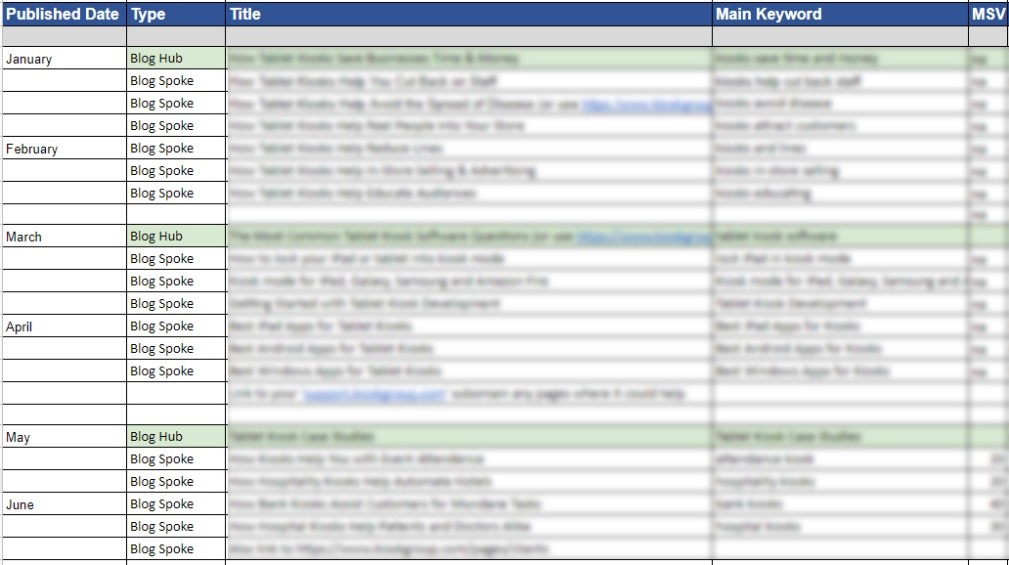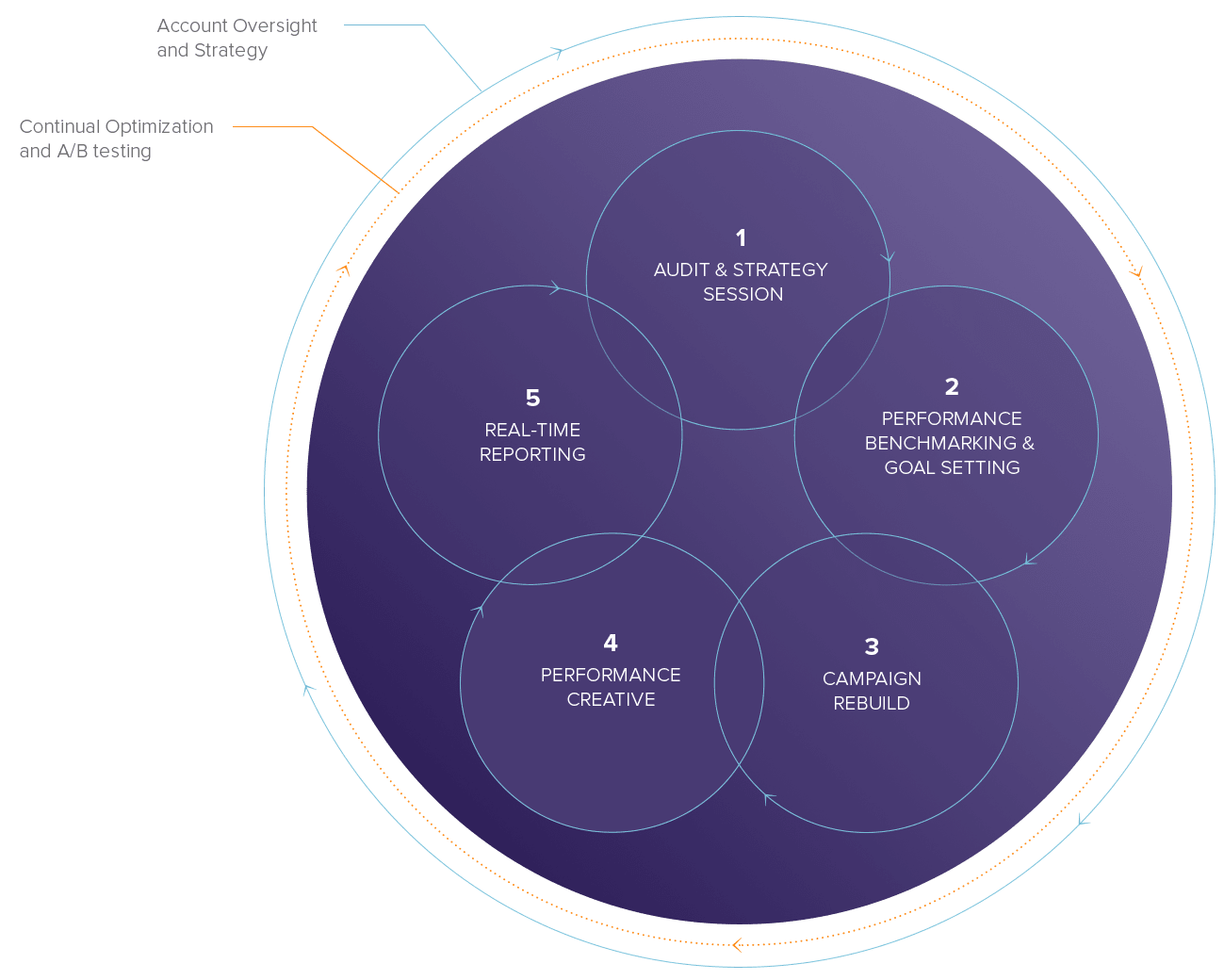How to Use the Hub & Spoke Content Model for Better SEO
If you are a business owner who has a site with original content, or you’re planning the creation of fresh content, a hub & spoke model is an excellent way to organize it all and improve your site’s SEO. As a content strategy, it offers numerous significant benefits that can give you an SEO advantage over your competition.
In air traffic control, the phrase ‘hub & spoke’ means ‘a system of routing air traffic in which a major airport serves as a central point for coordinating flights to and from other airports.’
In the World Wide Web and content SEO, it means something a little different.
What Does Hub & Spoke Mean in Search Engine Optimization (SEO)?
A Hub & Spoke content model (sometimes called Pillar & Cluster) is a content optimization strategy in which a site’s related content is organized and linked to help your pages and blog posts rank better in organic search results.
It consists of a hub (or pillar or main) page and multiple, theme-related spoke (or cluster or sub) pages that interlink. The hub page links out to all the spoke pages, and the spoke pages link back to the hub page and sometimes to each other. Each thematically connected piece of content is linked together.
User and SEO Benefits of a Hub & Spoke Content Model
- Using it helps you focus on topics instead of keywords like Google suggests we do.
- It helps establish your site as an authority in your field.
- It helps keep people on your site longer because you’re covering topics in depth and encourages them to visit more than one page on your site, all of which helps your SEO (session duration and bounce rate especially).
- It makes it easier for both search engine crawlers and users to navigate and understand your site and your content.
- It helps you plan and organize future content.
The goal of the hub & spoke content model is to cover a topic on your site in a comprehensive way, adding depth to your content that site visitors crave and search engines reward.
When you cover a topic in a highly thorough way, site visitors tend to stay on your site longer and click around more. This gives you more opportunity to get them to take a desired action like leave their email or make a purchase.
Longer time on site and clicking to other pages within the site also signal to search engines that your site is satisfying the visitors they send your way, and makes them reward your site by giving it better rankings (with all other things being equal).
The more content spokes you have, the higher the chance you have of attracting searchers. And when a visitor lands on one of the spokes they’ll see that they can dive deeper into the subject while staying on your site.
A hub & spoke model also satisfies search engine crawlers by making it easy for them to discover all your pages and posts (since they are all interlinked) and learn how they are related, recognizing topic relevance in all of them.
How to Organize Existing Content Using the Hub & Spoke Framework for Optimal SEO
Let’s say you have an existing set of pages that you’d like to organize in the hub & spoke framework. To find similarly-themed pages, which is essential for this, follow these steps:
- List some topics your site covers currently.
- Use your site’s search by entering words and phrases related to your chosen topics to find related pages.
- Go to Google.com and type this in the search box: site:[your site] [keyword phrase]
- So an example could be site:cnn.com political news, this would show you all the pages that have occurrences of ‘political news’ on the site www.cnn.com.
- List all similar pages you find in a spreadsheet from steps 2 and 3. These are your potential spokes.
- Determine if there is a page in your spreadsheet that covers the topic more comprehensively than the others or offers more of an overview of the topic. This can be your hub.
- If there is no such page, create a new page that will be your hub. It ought to consist of text that acts as a solid overview of your topic, should stand on its own as a useful page, and link to all its related spokes.
- Add links from your hub to all the spokes in your spreadsheet that make sense. Ideally, you add the links somewhere in the main content of the hub page and not the sidebar or footer.
- Link back to the hub from each spoke and interlink spokes where it makes sense.
- Link to your hub from your navigation, other related pages, and possibly your homepage too.
How to Create a Content Calendar for New Content Using the Hub & Spoke SEO Framework
If you are planning on creating new content and want to apply the hub & spoke model to it, follow these steps:
- Do your keyword research and choose a topic (a keyword phrase) that your site could cover that relates to your field, niche, or industry. If you’re a plumber, your target keywords could be ‘plumbing’ or ‘fixing pipes’. If you make tennis elbow devices, it could be ‘treating tennis elbow’. If you’re a furniture manufacturer it could be ‘furniture manufacturing’ or ‘how to buy furniture’.
- Type the chosen keyword phrase into one of the following: Answer the Public, Google Trends, Keyword.io or Ubersuggest and look for keywords that are related to your chosen topic.
- List them in a spreadsheet and add a column for ‘Monthly Search Volume’.
- Use a keyword search volume tool like Keyword Sheeter or Keyword Generator and enter in the spoke topics you found.
- The ones with the highest number (produces the most monthly searches) will become your spoke topics.
- Add the hub topics with each of their corresponding spoke topics underneath in a spreadsheet, and add Date, Type, Title, Keyword and Monthly Search Volume (MSV) columns.
Published Cadence

The publishing cadence can be determined by your business goals and resources. Ideally you post your hub article first, and then its related spokes over time. This can happen simultaneously with other topic hubs on your site too.
Examples of Hub & Spoke Site Sections
Structuring your content using the hub & spoke model is an excellent, SEO-informed framework that is both organized and scalable. Best of all, it helps establish you as an authority, and it pleases site visitors and search engines, giving you a leg up on your competition.












